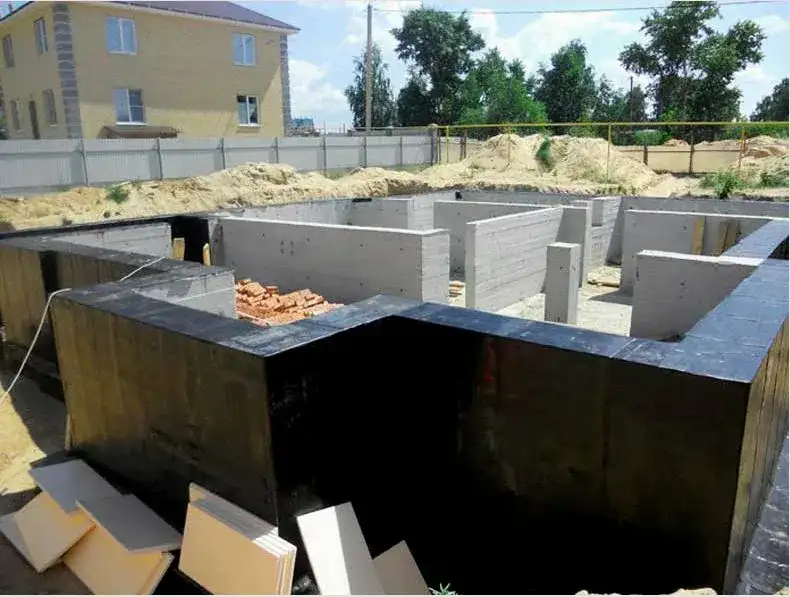In the upcoming years, basement waterproofing will shift from an optional process to an absolute need. All homeowners with basements should pay attention to this step because neglect could trigger thousands in expenses. Poor waterproofing can cause several issues, such as mold growth, water damage, and structural problems.
Selecting the right waterproofing methods is vital when planning either new construction work or an old structure renovation project. Through this comprehensive guide, we will walk you through the most steadfast methods, the costs, and expert advice for a durable solution.
NEED TO SAFEGUARD YOUR BASEMENT? EXPLORE OUR FULL GUIDE ON WATERPROOFING AND LEARN WHAT METHODS WORK BEST FOR YOUR HOME. GET STARTED NOW!
Why Basement Waterproofing Is Crucial
Any building becomes most vulnerable to moisture due to its cracked areas. Water seeps through broken floor and wall surfaces. High water levels and poor drainage systems will lead to damage. Cellar waterproofing shields your home’s foundation from such harm. It ensures no moisture can enter and create long-term issues. It also helps maintain your property’s value. A dry basement will enhance the value of your house whenever you sell it.
Types of Basement Waterproofing
You must pick the best waterproofing strategy based on your basement’s condition, climate, and building design. Here are the best three methods used by experts:
1) Interior Basement Waterproofing
Interior systems are ideal for controlling minor leaks or concentration. This method uses sealants and coatings applied to the floors and inside walls. Interior drains and sump pumps may also be fitted to expel water quickly. These systems are less costly and quicker to install. However, remember, they do not stop water from entering your foundation. Instead, they cope with it once it is already inside. Interior waterproofing is best when groundwater pressure is low, and you are looking for a fast, cost-effective solution.
2) Exterior Basement Waterproofing
Building intrusions during repairs stop water from reaching the basement walls. Foundation waterproofing needs soil digging near the walls, followed by wall coating. Between the drainage panels and the footing drain system, both components are added to expel water from the space. The method proves highly effective in withstanding heavy rainfall conditions because of its durability. The implementation of this solution needs higher levels of labor effort. That means it is costlier than interior solutions, but the long-term results are often worth it.
3) Drainage Systems
Without correct drainage, no waterproofing method will be fully operative. The three methods are interior sump pumps, French drains, and exterior perimeter drains. Your French drain works to extract the water that reaches the sump pump for external discharge. Such drainage systems work best in combination with additional water control strategies to stop future water damage.
Understanding Waterproofing Costs
Several factors affect the cost of waterproofing. The size, the extent of existing loss, the selected method, and the site all affect your total cost. Interior methods often cost between $3 to $7 per square foot. The installation cost of external waterproofing varies between $8 and $15 per square foot. Additional drainage systems involving sump pumps and French drains begin at a minimum price of $1,500. The best practice to prevent surprises is to utilize our Waterproofing Estimation Services. Our professionals offer accurate cost estimations and help you plan accordingly.
Key Factors That Affect Waterproofing Success
Waterproofing a basement is not just about applying a sealant or installing a sump pump. A few overlooked details can ruin even the most organized waterproofing projects. For long-lasting success, you must assess many key factors before and during the installation. Here is what you should keep in mind when planning your waterproofing project:
Soil Type
The soil type defines basic ways in which water flows in the proximity of your home. Heavy clay content in the soil extends water retention, which generates higher hydrostatic pressure against the foundation wall. Water can penetrate through joints or cracks due to prolonged water retention in such soils. Conversely, moisture stays away from basements due to the rapid water drainage of sandy soils. They can still allow water to flow quickly toward the base if the grading is incorrect. A skilled contractor will test your soil and consider its drainage capacity during waterproofing and the drainage system.
Weather Conditions
Your native climate is central to waterproofing efficacy. Homes situated in regions with heavy snow, rainfall, or flooding need solid waterproofing systems. This often includes a mixture of sump bumps, exterior walls, French drains, and vapor barriers. Conversely, homes in drier or arid areas might not need such extensive measures. In those cases, interior waterproofing systems, e.g., dehumidifiers, sealants, or water-resistant insulation, can be enough. Still, sudden storms can happen anywhere, so even in arid climates, a strong waterproofing plan offers peace of mind.
Age and Condition of the Home
Older homes are often worn out, so new houses have not yet been developed. The most typical examples of water penetration include cracked bases, old drainage systems, and materials that easily absorb water. Such vulnerabilities create pathways for water to enter the home structure. When dealing with such conditions, it becomes vital to implement multiple waterproofing methods rather than relying on a single approach. The critical solution requires an expert combo of interior and exterior waterproofing because it targets core structural issues. Periodic inspections, especially following heavy rainfall, enable the spotting of water damage. This prevents major problems from emerging.
Benefits of Basement Waterproofing
There is more to waterproofing than just keeping your basement dry. An investment saves money and guards your family’s health and luxury. It also:
- Increases property value
- Prevents structural damage
- Eliminates mold and mildew
- Improves indoor air quality
- Allows safe finishing or remodeling of the basement
Get Help from Professionals
It is not always easy to choose between basement waterproofing methods or decide how to install them. That is where expert help becomes valuable. A reliable Construction Estimating Company enables you to examine methods and predict costs until you decide on the optimal procedure. Our services guarantee both project deadlines and financial goals while developing buildings with longevity. Attempting cost prediction or rushed cost-cutting measures will probably result in expensive reworks. Do not take chances with your home’s base.
BEFORE YOU MAKE ANY DECISIONS, LET OUR EXPERTS GUIDE YOU! USE PROFESSIONAL ESTIMATION TO PICK THE BEST WATERPROOFING METHOD AND GET A RELIABLE BUDGET PLAN.
Final Thoughts
Basement waterproofing is a smart move to shield your home from the ground up. Whether you live in a flood-prone area or simply want peace of mind, this blog shows you how to make better decisions. By selecting the right methods, being informed of cost factors, and hiring reliable experts, you could ensure your basement stays dry for decades. Do not let moisture control your assets. Take action now and make waterproofing a priority. If you are uncertain where to start, reach out to SMA Estimating LLC for peace of mind. Ensure your basement stands the test of time with the right plan and the best team.

